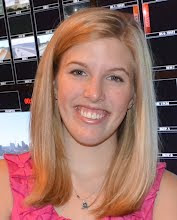I watched "60 Minutes" (CBS) on Sunday, May 30. The show broadcasted three stories during the hour-long show. What I found most amazing was that I didn't realize the whole hour had past while watching the program. The storytelling was so powerful that I stayed on the couch and forgot about my typical multi-tasking!
 This is a still shot from a video given to the soldier's family by the military. The family shared the video with "60 Minutes."
This is a still shot from a video given to the soldier's family by the military. The family shared the video with "60 Minutes."The first story was a follow-up report about road-side bombs in Afghanistan (watch here). The story was about how servicemen volunteer to be part of the team that looks for roadside bombs. The most striking line in the story was when they related that this team risks their lives to disarm a bomb that cost $10 US to make. They could lose their life over $10 but the possibility of saving other soldiers' lives is what drives them forward. A nat pop helped show the team's relief that none of them were injured when a bomb exploded. But not every expedition is so lucky. A service memorialized all the military personnel who had lost their lives disarming road-side bombs. The way the ceremony was included in the story made it extremely memorable. The dead soldiers' names were announced by military branch. The audio was the soldier's name, and the visuals were split-screen between a photo of the person and the video of the officer reading names. It demonstrated how every branch of the military was affected and how many soldiers gave their lives to save others. It was much more effective at showing their sacrifice than just saying that a certain number of men had died while disarming bombs.
 This is what DNA looks like up close and personal.
This is what DNA looks like up close and personal.The second story (watch here) was about how researchers are trying to gather DNA for animal species that are extinct and are almost extinct. They want to be able to preserve the DNA. The end result would be implanting that DNA into a similar animal, who would act as a surrogate. They've successfully done this process with African wild cat DNA implanted in a house cat. In this story they used nat pops to show how excited children got when they imagined dinosaurs. The nat pop really helped bring the story to life and show just how exciting it would be to bring dinosaurs back!
 This is Anna Wintour with Morley Safer, who reported the story.
This is Anna Wintour with Morley Safer, who reported the story.The third story was about Anna Wintour, the editor of Vogue magazine for the last 22 years (watch here). It was a profile story about her that focused on her trying to dispute the implied image of her in "The Devil Wears Prada". The show included very little footage of her smiling, which was opposite what she was trying to prove. I found this to be the weakest segment of the show because it was a profile, with no real news value. Maybe I would have appreciated the piece more if I was a devoted reader of Vogue.
Personal News Gathering Experience
I've worked on several stories in the time since my last blog. Here are several things that I learned about shooting video:
 Sky is an energetic puppy who loves to chase people. In this photo, she's chasing a skateboarder (not seen).
Sky is an energetic puppy who loves to chase people. In this photo, she's chasing a skateboarder (not seen).2. Angles help make the story more visually interesting. I was working on a story about roundabouts. Creating a CCC is troublesome when reporting about inanimate objects. I knew most of my video would be of roundabouts. It would get boring if all the video was on the same plane of view. So to mix it up, I shot video from the ground of cars driving past me and framed a yield sign between some of the flowers that were planted at the base of the sign. As my professor says, the camera needs to "take the viewer where the eye doesn't go."
3. Cutaways are important to remember to shoot. When I'm rushed to photograph a story and the interviewee is following me or showing me the item to shoot, I get nervous. Then I forget to shoot cutaways. I get the close-up shots, but they still manage to have the interviewee's hands in them. But now that I recognize this as a problem, I can fix it.






No comments:
Post a Comment